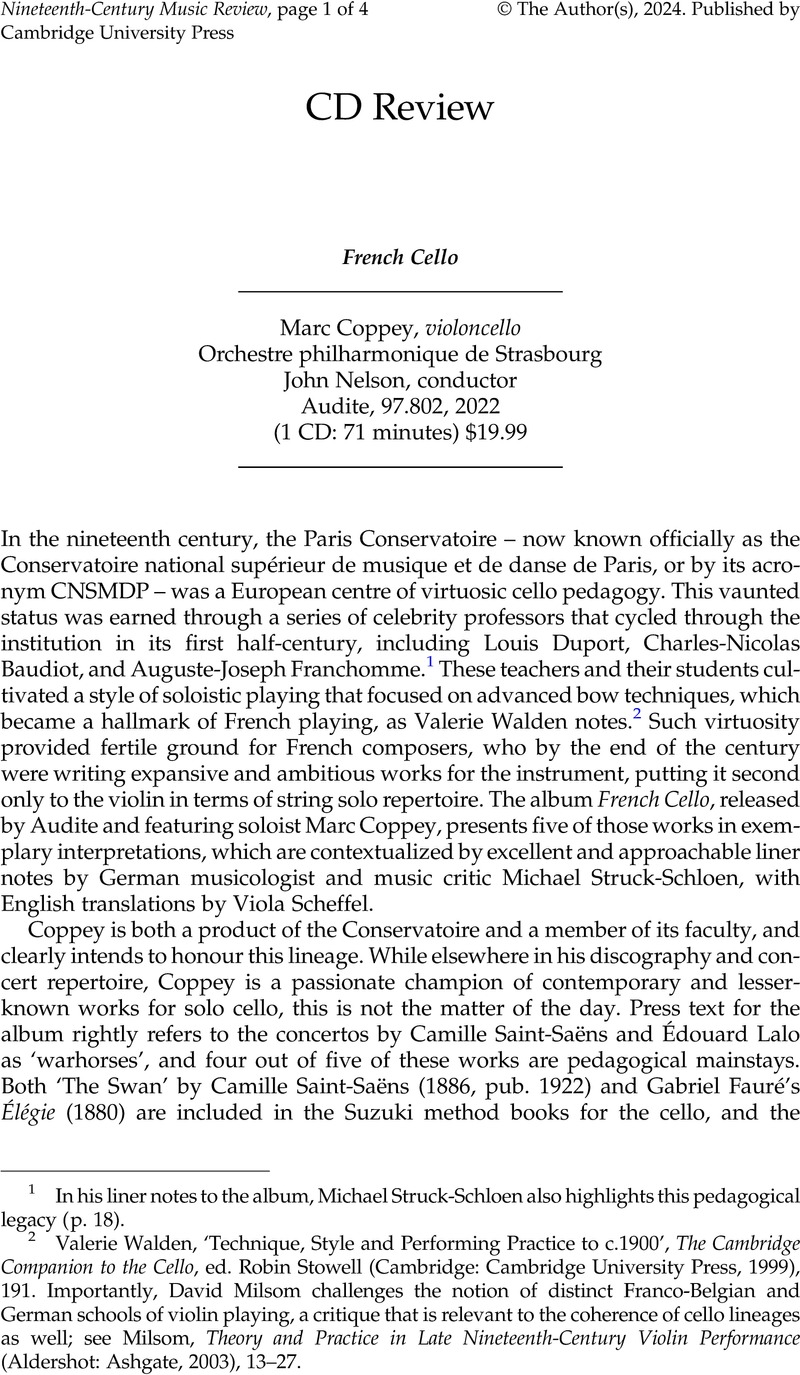No CrossRef data available.
Published online by Cambridge University Press: 30 January 2024

1 In his liner notes to the album, Michael Struck-Schloen also highlights this pedagogical legacy (p. 18).
2 Walden, Valerie, ‘Technique, Style and Performing Practice to c.1900’, The Cambridge Companion to the Cello, ed. Stowell, Robin (Cambridge: Cambridge University Press, 1999), 191Google Scholar. Importantly, David Milsom challenges the notion of distinct Franco-Belgian and German schools of violin playing, a critique that is relevant to the coherence of cello lineages as well; see Milsom, , Theory and Practice in Late Nineteenth-Century Violin Performance (Aldershot: Ashgate, 2003), 13–27Google Scholar.
3 Matteo Gofriller (1659–1742) was a Venetian maker whose instruments are known for their warmth and large proportions (many have been cut down to a more modest size over the centuries). Several influential cellists have performed on Gofrillers, including Pablo Casals – although Casals’ instrument was thought to be by the Cremonese maker Carlo Bergonzi until after his passing.
4 ‘Saluons au passage les Variations symphoniques de M. Boëllmann. On est heureux de rencontrer … une oeuvre si bien faite et si intéressante. La pensée est noble, et noblement exprimée. L'orchestre de M. Boëllmann est coloré sans être bruyant, et n'étouffe jamais l'instrument principal; bien plus, il le fait toujours valoir. Ajoutons que l'interprète, M. Salmon, a été au-dessus de tout éloge, et que le public lui a justement manifesté ses sympathies en le rappelant trois fois’; Hippolyte Barbedette, ‘Concert Lamoureux’, Le Ménestrel 4 December 1892, 389.
5 E.D., ‘Correspondance spéciale: Paris’, Revue musicale Sainte-Cécile 7 May 1898, 109.
6 ‘Salle de la Lyre Havraise: 1er Concert Cornélis Liégeois’, Revue comique normande, 6 December 1902.
7 Angers-artiste, 28 February 1903, 332.
8 Kennaway, George, Playing the Cello, 1780–1930 (Farnham: Ashgate, 2014), 228–33Google Scholar.